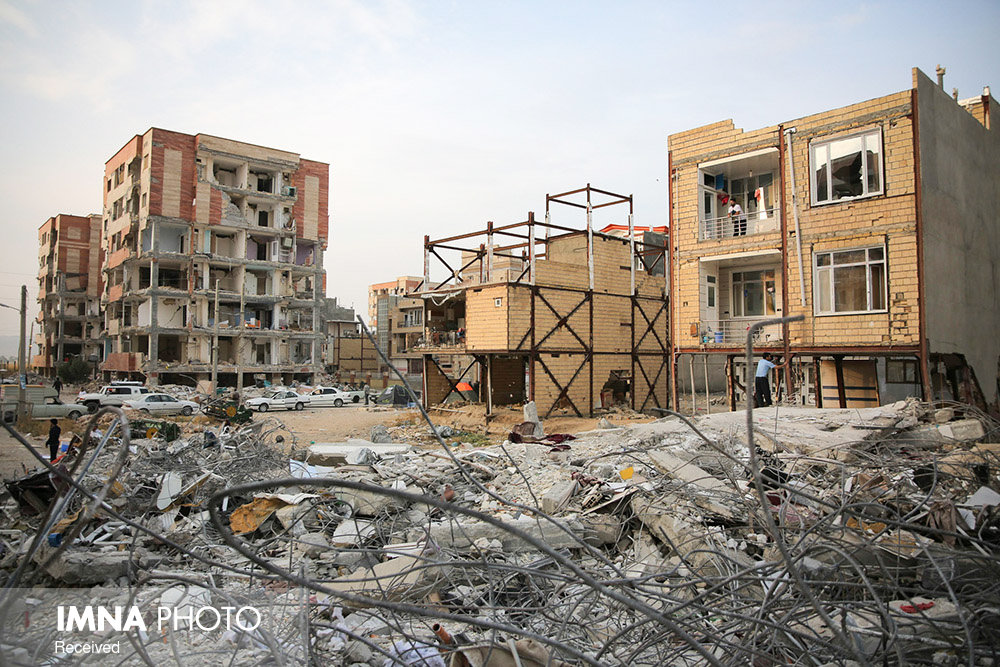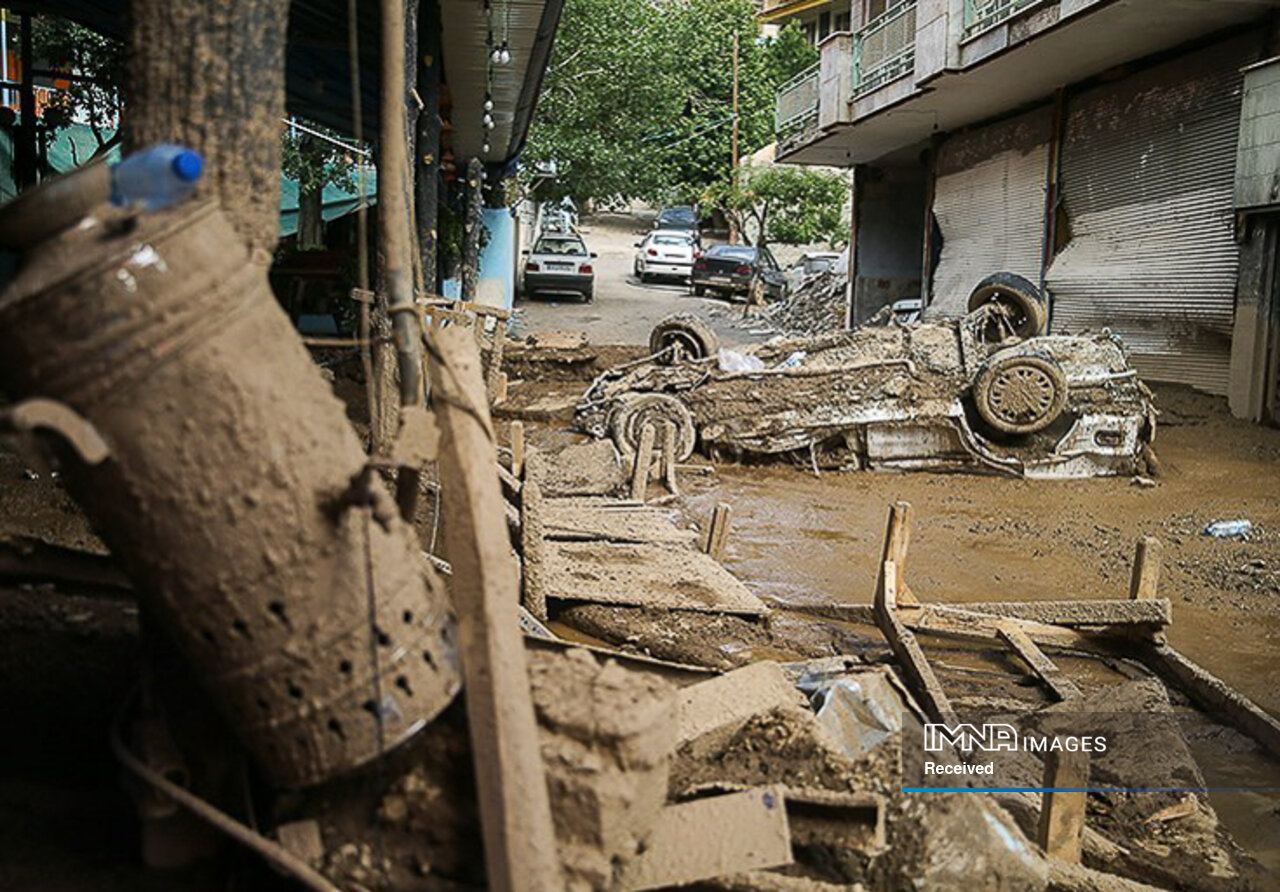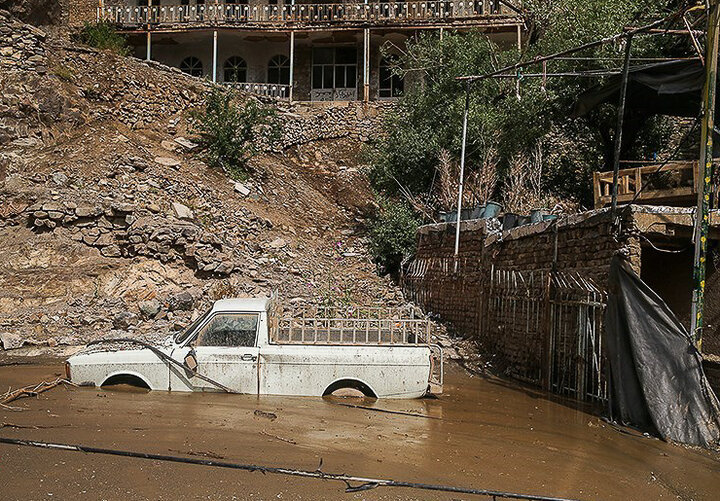Iran (IMNA) - The 2019 edition of this day is part of the "Sendai Seven" campaign, which centers around the seven targets outlined in the Sendai Framework. This year's focus is on substantially reducing disaster damage to critical infrastructure and essential services such as health and education facilities by developing their resilience before 2030.
The Sendai Framework is a voluntary, people-centered approach to disaster risk reduction that spans 15 years. It succeeded in the 2005-2015 framework and aims to enhance preparedness and response to disasters.
In Iran, October 13 is also observed as National Disaster Reduction Day, during which weaknesses are identified to mitigate potential risks associated with these events.
Despite recent efforts by various organizations to coordinate support and prevent the recurrence of natural disasters, the measures taken have not adequately addressed the scale of these events. Organizations can only meet a small fraction of the needs arising from such disasters.
To address these shortcomings, it is crucial to implement long-term measures and practical action plans. Additionally, a comprehensive understanding of disasters is required to enhance the capacity of national entities to reduce disaster risks.
Iran Faces Increasing Frequency of Natural Disasters: Infrastructure, Economy, and Lives at Stake
In Iran, the frequency of natural disasters has significantly risen, resulting in extensive damage to infrastructure and the economy, as well as the loss of many lives.
In recent years, numerous widespread disasters have struck various regions of the country, posing significant challenges to risk reduction and management efforts.
For instance, on March 19, floods ravaged 28 out of 31 provinces, a devastating earthquake measuring 7.3 on the Richter scale hit Sarpol-e Zahab in Kermanshah in 2017, and the southern provinces frequently experience severe sand and dust storms. These events, among others, have caused immense and long-lasting impacts.

Furthermore, in addition to floods, droughts, earthquakes, land subsidence, and extreme temperatures, Iran is currently grappling with a wet spell and an outbreak of locust swarms that pose a threat to agricultural lands.
To mitigate the risks associated with these disasters, various laws and regulations have been implemented. The Fourth Five-Year National Development Plan (2010-2015) emphasized the reinforcement of buildings against seismic waves, although its effectiveness in minimizing damage has been called into question.
Strengthening Disaster Risk Reduction Measures for Safer Communities
In order to address the shortcomings of current laws and ensure the safety of buildings in earthquake-prone areas, an organization dedicated to overseeing compliance is crucial. The existing organization, which focuses on rebuilding residential units affected by natural disasters, should be expanded to include monitoring and enforcement of construction regulations.
It is imperative to analyze the reasons behind the failure of disaster reduction laws and evaluate the effectiveness of funds allocated for this purpose. Additionally, it is important to explore more efficient crisis management solutions, drawing from global experiences in preventing natural disasters.
To achieve these goals, the establishment of a national disaster risk reduction strategy is essential. This strategy will enable the country to prioritize actions and allocate resources effectively towards reducing disaster risks. Through extensive research and collaboration, cities can adopt the most effective and cost-efficient policies, methods, and technologies to enhance their resilience to natural disasters.
The Importance of Preparedness in Disaster Management: Challenges and Solutions in Iran
Rewritten text: Disaster management consists of a crucial cycle that includes mitigation, preparedness, response, and recovery. However, it is the aspect of preparedness that is often overlooked in our country. While the response phase is the most experienced part, the effectiveness and efficiency of the response greatly depend on preparedness.
In general, effective crisis planning requires access to comprehensive databases. Unfortunately, Iran faces challenges in accessing important databases such as spatial and geographic information. Additionally, there is a lack communication and information exchange among organizations involved in disaster management.
Another significant problem is the absence of an organization to provide compensation for destruction. Insurance plays a key role in risk transfer and funding for rebuilding efforts. Without a proper mechanism in place, the process of recovery becomes even more challenging.
Furthermore, the preparedness of individuals in emergency situations is a vital factor. Public education on self-protecting behaviors, relief aids, and mitigation is crucial. However, Iran has not made significant progress in improving preparedness, except for some limited maneuvers and educational initiatives.
It is important to note that having knowledge on how to prepare for emergencies does not guarantee that people will take necessary self-protection measures. Past disaster experiences alone are not enough to enhance awareness. School education, although valuable, cannot solely provide the practical information needed to effectively respond to earthquakes.
Iran Takes Steps to Mitigate the Impact of Natural Disasters
In 1969, Iran enacted its first law aimed at preventing and addressing flood hazards, with the goal of safeguarding lives and property from destructive floods. The law mandated that the Ministry of Interior undertake all necessary measures to preserve, rectify, and rebuild floodwaters and drainage systems. Additionally, ministries and government agencies were required to support the Ministry of Interior in its efforts to combat flood threats and other natural disasters across the country.

Recognizing the need for a coordinated approach, the parliament passed another bill a few years later, establishing a national committee tasked with reducing the impact of natural disasters. This committee was responsible for exchanging information, conducting scientific research, and seeking practical solutions to prevent and mitigate the effects of storms, floods, droughts, and other natural calamities.
Despite these legislative efforts, the laws faced challenges in their implementation. To address this issue, the Central Insurance Company proposed the establishment of a natural disaster insurance fund. The aim was to provide assistance to victims of natural disasters and enhance their ability to recover. Although the bill was approved by the Cabinet in 2001, its implementation has been delayed due to budgetary constraints.
Currently, Iran is grappling with the consequences of climate change, which has led to fluctuations in rainfall patterns and an increase in flood events. To tackle this issue, the construction of dams has been identified as a crucial measure. Minister of Energy Reza Ardakanian highlights the importance of avoiding construction in river beds and banks, as well as ensuring that structures such as bridges are built to withstand potential floods. Additionally, the implementation of small dams in flood-prone areas can provide significant assistance in flood control efforts.
As Iran continues to face the challenges posed by natural disasters, these measures and ongoing initiatives demonstrate the country's commitment to mitigating their impact and protecting its citizens and infrastructure.
Human Activities Exacerbate Forest Vulnerability to Disasters
Forests, being a vital natural resource, are highly susceptible to threats caused by human activities. Insufficient protection of these forests can significantly amplify the impact of natural disasters, such as floods, due to the lack of vegetation cover.
The depletion of vegetation can occur either through deforestation or wildfires. According to Qasem Sabz’ali, commander of the forest protection unit of the Forests, Range, and Watershed Management Organization, approximately 15,000 hectares of forests in Iran are ravaged by wildfires each year, with 95 percent of them being human-caused, as reported by ISNA in April 2018.
These forest wildfires impose a heavy economic burden on the country, amounting to 560 million rials (about $13,000) per hectare. In order to effectively combat fire outbreaks in natural environments, it is crucial to establish an independent firefighting system in forests and rangelands. This system should be equipped to swiftly respond to fires and possess the capability to control them. Achieving this goal is also feasible through the training of specialized forces.

Overcoming Challenges to Build Disaster-Resilient Cities in Iran
In Iran, the creation of disaster-resilient cities faces numerous challenges rooted in human actions. Two catastrophic events, one caused by human negligence and the other by natural forces, have brought these challenges to light. Poor policies, lack of law enforcement, environmental degradation, and a lack of consideration by officials and individuals are all contributing factors.
The main obstacles include the absence of regulatory frameworks, unplanned urbanization and city development, inefficient environmental plans and policies, aging buildings and vulnerable infrastructure, limited capacities of municipalities, as well as insufficient funding and qualified human resources.
To tackle these challenges, it is crucial for responsible entities to equip themselves with a thorough understanding of their disaster risk landscape. They must also strengthen their early warning systems and prepare comprehensive plans and laws. Additionally, communities should be proactive and alert to potential disasters, taking necessary precautions to minimize future losses.
By addressing these issues head-on, Iran can effectively build disaster-resilient cities and ensure the safety and well-being of its residents.


Your Comment